Short Book Reviews
Hanna Kryszewska, Poland
Hanna Kryszewska is a teacher, teacher trainer, trainer of trainers. She is a senior lecturer at the University of Gdańsk, and EU Teacher Training College where she trains pre-service teachers. She is co-author of resource books: Learner Based Teaching, OUP, Towards Teaching, Heinemann, The Standby Book, CUP, Language Activities for Teenagers, CUP, The Company Words Keep, DELTA Publishing, and a course book series for secondary schools: ForMat, Macmillan. She is also co-author of a video based teacher training course: Observing English Lessons. Hania is a Pilgrims trainer and editor of HLT Magazine.
E-mail: hania.kryszewska@pilgrims.co.uk
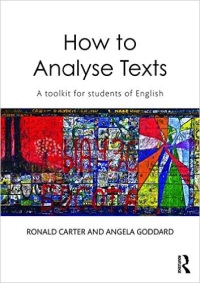
How to Analyse Texts. A toolkit for students of English. R. Carter and A. Goddard. (2016). Routledge. ISBN 978-0-415-83680-7, pp249. This book will be of great interest to teachers, university students and language learners who like to use texts for language analysis. It provides a framework of ideas and approaches how to analyse spoken, written and multimodal texts. The book provides a lot of activities and sample texts which are ready to use, as well as guidelines for selectingown texts for analysis. The book is divided into three parts. Part I focuses on ways to set up good learning habits and learning routines. It looks at the kinds of texts, ways of gathering materials, suitable and reliable research tools, reading and note-taking, analysing and reporting the findings. Part II looks at the different ways texts are structured and is divided into three sections which look at graphological and phonological levels, lexical and sematic levels, and grammatical levels. Personally I really liked and benefitted from reading the chapters on frequent words, words and multiple meanings, connotation and collocation, lexical cohesion, grammar speech and language change, grammar and politics, texting grammar, and creative grammar. Part III focuses on dimensions of texts such as place and time, textual perspectives and points of view. The sample texts are modern, up to date and very interesting. They represent different genres such as artefacts, graffiti, promotional texts, photographic images, greeting cards, public signs, corpus data, job advertisements; all listed at the end of the book. At the end of the book you will also find a checklist for text analysis, an introduction to corpus resources and ideas how to use them, glossary list. The activities are engaging, innovative and virtually ready to use. Highly recommended.
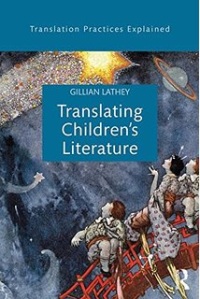
Translating Children’s Literature. G. Lathey. Routledge. (2016). ISBN 978-1-138-80376-3, pp161. This book has been published in the Translation Practices Explained series. In is an important voice in the discussion on writing and translating for children. The book offers an exploration of translation taking on board not only linguistic issues but also developmental ones. It needs to be borne in mind that writing and translating for children means writing for an audience that ‘spans a period of enormous intellectual progress and affective change from birth to adolescence’. The chapters in the book look at narrative communication with a child, translating cultural aspects, translating the visual in. modern picture books, dialogue, dialect, translating sound including reading aloud, poetry, wordplay and onomatopoeia, retelling, retranslation, reworking and relay translation. The book also looks at the publishing industry and market, translation industry and globalisation of children’s literature. This is the first publication of this kind as it offers not only a guide to a wide range of issues related to translating children’s literature, but also features opinions of accomplished translators of children’s literature, many examples of translation, and, finally, case studies. The book can be used by students for self-study, or by tutors delivering courses on translating children’s literature as each chapter includes questions and exercises.
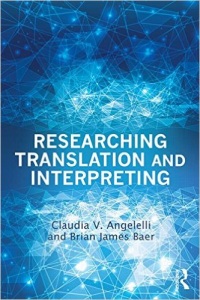
Researching Translation and Interpreting. Ed. C. V. Angelelli and B. J. Baer. Routledge. (2016). ISBN 978-0-415-73254-3, pp291. This book will be of great interest to undergraduate students, PhD students, scholars and academics delivering courses or supervising research on translation and interpreting. In this volume you can find a broad overview of current research directions. It presents the major theoretical concepts related to research and presents various voices in the discussion on different methods. The book is divided into three parts. Part I is relatively short and it looks at the topic of the book in a broad sense. Part II maps out the field and contains 11 voices of experts in the field who among others address the following issues: agency and role, bilingualism and multilingualism, gender and sexuality, power and conflict, and profession, identity and status. Part III contains 13 texts on research methods such as: biometric studies, case studies, corpus-based studies, narrative analysis and many others.
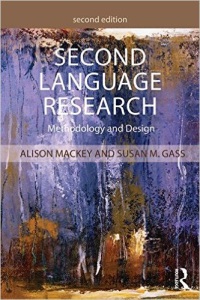
Second Language Research. Methodology and design. Second edition. A. Mackey and S.M. Gass. Routledge. (2016). ISBN 978-1-138-80856-0, pp433.This book will be of great interest to undergraduate students, PhD students, or any other novice researchers, and scholars and academics delivering research courses or supervising research into second language. The book is divided into 11 chapters: introduction to research, collecting data, data collection measures, coding, research variable, validity and reliability, quantitative studies, qualitative studies, classroom research, mixed methods, analysing data, and concluding and reporting research. The book is very readable, exhausts the topic of research in full; it has sound theoretical basis supported by ample examples. The appendices contain mainly sample consent forms and sample transcription conventions. I am unable to judge myself how the second edition differs from the first one, but Rod Ellis in his short review at the back of the book mentions the following additions: a chapter on mixed methods, and new sections which encourage reflection (Time to think boxes) and suggestions for actual research (More to do and more to think about boxes).
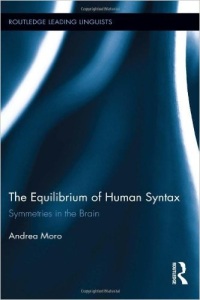
The Equilibrium of Human Syntax. Symmetries in the Brain. A. Moro. Routledge. (2013). ISBN+13: 978-0-415-63967-5, pp 479. This book has been published in the Routledge Leading Linguists series edited by Carlos O. Otero. The series contains titles such as .Theoretical Comparative Syntax, Structures and Strategies, Aspects of Syntax and Agreement and Typological Studies. The author claims that this is an interesting time for linguistics as it has reached maturity which can now take on board and assimilate input from other empirical studies. This coupled with the recent progress in informatics, neurolinguistics, neuroimaging, neurophysiology, neurosurgery and genetics yields very interesting outcomes, yet at the same time leads to further questions to be answered in the future. The main theme of the book is symmetry and breaking the symmetry of syntax; its imperfections. The first part of the book deals with formal linguistic issues such as breaking symmetry in syntax: inversion and clause structure, and clause structure folding and left periphery issues. The second part looks at the relationship between language structure and brain structure by focusing on syntax and how the brain shapes grammars. The three areas it looks at are: syntax in the brain, impossible languages and how much world there is in the language. The book is a fascinating read summing up a massive body of research. Therefore it will be of great interest to undergraduate students, PhD students, academics and possibly experienced language teachers and teacher trainers interested in linguistics and as well as psychologists working in the field of psycholinguistics and neurology of language. .

Please check the Teaching Advanced Students course at Pilgrims website.
Please check the English Language Improvement for Teachers course at Pilgrims website.
Please check the English Language Improvement for Adults course at Pilgrims website.


|